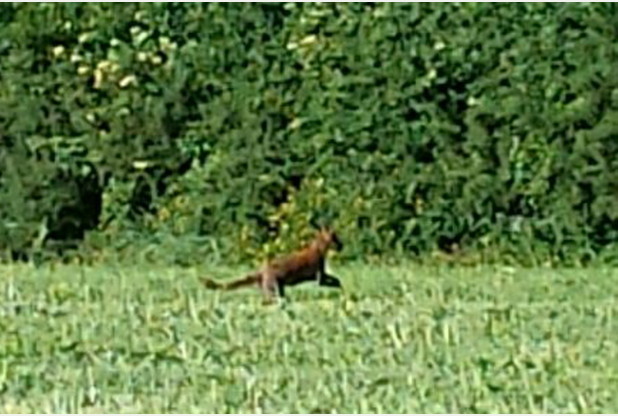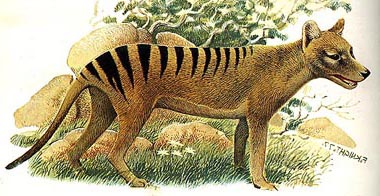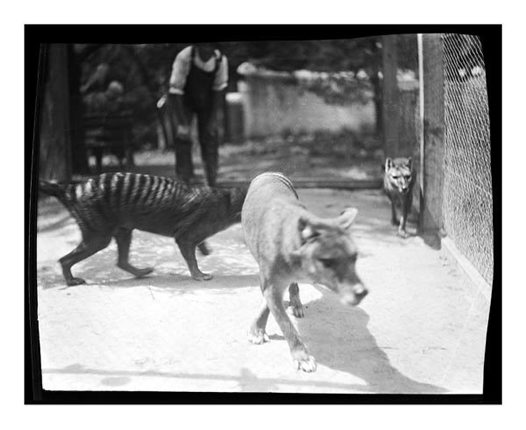It looks like you're using an Ad Blocker.
Please white-list or disable AboveTopSecret.com in your ad-blocking tool.
Thank you.
Some features of ATS will be disabled while you continue to use an ad-blocker.
share:
This came up on my FB news feeds today, there is not much of a story, but I think the picture is great. Now Im no expert on this subject by any means,
but I have spent quite a lot of time working in Bodmin town over the years, and have spoken to many locals about it, and many of them agree that it
exists. I have no claims to have ever seen this beast or even think I saw something that it could have been.
I just think it's a cool story.
Here is the photo from the story in my local paper.

And here is the story (Express & Echo)
Same story different link (Plymouth Herald
I would love to hear what you all think.
I just think it's a cool story.
Here is the photo from the story in my local paper.

And here is the story (Express & Echo)
Experts say a teenager's snaps of what appears to be a large cat could indicate they are breeding. Henry Warren, 19, was taking pictures in fields when the huge cat-like creature leapt out in front of him. The sighting took place a few miles from remote Bodmin Moor, where the famous beast is said to roam. There has been speculation the animal in the images could be the mythical 'Beast of Bodmin'. The student managed to rattle off several frames before the animal disappeared into undergrowth and has since reported the incident to the Plymouth-based British Big Cat Society. Britain's most famous big cat was first spotted in 1983 and there have been over 60 recorded sightings since. There have been sightings on Exmoor, Dartmoor and several other rural locations. It was declared a phantom in 1995 by the Ministry of Agriculture, Fisheries and Food but Henry thinks they're wrong. Henry, of near Gwinear, west Cornwall, said: "I was taking pictures of our new house when I saw something run across the field and in front of my lens. "It was absolutely massive and was hoping up and down like a large cat. There's no way it could have been fox, a dog or anything else like that. "It ran around 60 metres in just a few seconds and was leaping in the air with its front two legs first. "I did some research after and thought it may be linked to the Beast of Bodmin - it certainly looks like a big cat."
Same story different link (Plymouth Herald
I would love to hear what you all think.
edit on 28-7-2014 by dam00 because: added more to post
a reply to: Frocharocha
IIRC 3 locations in the UK have feral wallaby colonies - but all are a long hop < pun > from bodmin
IIRC 3 locations in the UK have feral wallaby colonies - but all are a long hop < pun > from bodmin
originally posted by: Frocharocha
It looks like a Kangooro to me. But i really doubt it is.
Does not look like one too me, but I would not be surprised.
We got some kangaroos/wallabies living in the wild here in Germany (they escaped some Zoo or something) that somehow survive the winters.
Hard to judge the size by the photo.
It looks like it could be a fox that is suffering from mange.
It looks like it could be a fox that is suffering from mange.
Long thought the sightings of 'big cats' in the UK were probably escaped exotic 'pets'. Who knows what all the rich folks have bought to keep on
their estates, which subsequently escaped or were released into the wild. Anything is possible. Highly unlikely to be an unknown native species.
Highly likely to be an assortment of exotic escapees. The one in the OP's photo looks too dark and richly colored, with a too long and prominent
neck/head to be a mountain lion (Puma concolor). Couldn't the photographer walk out to where this animal was and look for tracks? Tracks would sure
help with ID.
Snout looks too long to be any sort of felid and in particular, those front legs look a bit thin for something like a cougar. Tail looks a bit too
large for a canid. It actually does look like it could be a kangaroo.

Picture of a leaping kangaroo and a picture of a leaping cougar, cut out and scaled to the approximate size of the animal in the photo (aspect ratio maintained).

Picture of a leaping kangaroo and a picture of a leaping cougar, cut out and scaled to the approximate size of the animal in the photo (aspect ratio maintained).
edit on 2014-7-28 by theantediluvian because: (no reason given)
Wow, look at the snout folks, that doesn't match a kangaroo, or a fox. Not even close. FYI, there are pictures of fox, and kangaroos on the internet,
go look at some, then take another look at this pic. Some people on here are just too funny!
You know what it reminded me of?
One of these:

A Tasmanian Tiger
en.wikipedia.org...
A real photo to compare.

One of these:

A Tasmanian Tiger
The thylacine
(/ˈθaɪləsiːn/ THY-lə-seen,[3] or /ˈθaɪləsaɪn/ THY-lə-syn,[4] also /ˈθaɪləsɨn/;[5] binomial name: Thylacinus cynocephalus, Greek for "dog-headed pouched one")
was the largest known carnivorous marsupial of modern times. It is commonly known as the Tasmanian tiger (because of its striped back) or the Tasmanian wolf.[6] Native to continental Australia, Tasmania and New Guinea, it is thought to have become extinct in the 20th century.
It was the last extant member of its family, Thylacinidae; specimens of other members of the family have been found in the fossil record dating back to the early Miocene. The thylacine had become extremely rare or extinct on the Australian mainland before British settlement of the continent, but it survived on the island of Tasmania along with several other endemic species, including the Tasmanian devil.
Intensive hunting encouraged by bounties is generally blamed for its extinction, but other contributing factors may have been disease, the introduction of dogs, and human encroachment into its habitat. Despite its official classification as extinct, sightings are still reported, though none have been conclusively proven.
en.wikipedia.org...
A real photo to compare.

edit on 28-7-2014 by Darkblade71 because: (no reason given)
originally posted by: sincerelyme
Long thought the sightings of 'big cats' in the UK were probably escaped exotic 'pets'. Who knows what all the rich folks have bought to keep on their estates, which subsequently escaped or were released into the wild. Anything is possible. Highly unlikely to be an unknown native species. Highly likely to be an assortment of exotic escapees. The one in the OP's photo looks too dark and richly colored, with a too long and prominent neck/head to be a mountain lion (Puma concolor). Couldn't the photographer walk out to where this animal was and look for tracks? Tracks would sure help with ID.
The stories I have heard, are that there was a couple of estates that had big cats, and they had either escaped or been released when the laws changed.
I also agree that more evidence could be easily achieved, even if the photographer put someone in the spot the animal was and re-took the shot
I am making a reasonable effort to find more on the story
Looks like a deer to me. I think what looks like a huge tail is just an optical illusion and is part of the landscape.
Would be nice to see the several frames he was able to get and make a better judgement. As it is, the perspective may be throwing people for a loop.
Honestly, I thought Thylacine before I read where it was just based on the apparent morphology, but a different shot may clear things up.
a reply to: theantediluvian
Nice work ! but the front paws, and the curvature of the tail, are ringing to many alarm bells for me, Im going to say no to both Kangaroo, and Cougar.
Nice work ! but the front paws, and the curvature of the tail, are ringing to many alarm bells for me, Im going to say no to both Kangaroo, and Cougar.
Interesting BUT it's a Large Dog Fox.....
Look at the mussel colourings...... It's tail is extended because of its motion.......
PDUK

This was caught in Scotland a year or so ago....... Surprisingly there were a lot of 'absent' chickens as well
Look at the mussel colourings...... It's tail is extended because of its motion.......
PDUK

This was caught in Scotland a year or so ago....... Surprisingly there were a lot of 'absent' chickens as well
edit on 28-7-2014 by PurpleDog UK because: (no reason given)
a reply to: dam00
Maybe one of those estates was into rare exotic endangered/extinct species.
I could see some rich person wanting a Tasmanian tiger, getting one, and then later on realizing what they had would get them into a whole lot of trouble and releasing it into the wild.
The mind would suggest it is wrong to kill an "extinct" species, and that it would be better off free over being caught with it, so someone let it go......
Just letting my mind wander with the tiger idea a little.
Maybe one of those estates was into rare exotic endangered/extinct species.
I could see some rich person wanting a Tasmanian tiger, getting one, and then later on realizing what they had would get them into a whole lot of trouble and releasing it into the wild.
The mind would suggest it is wrong to kill an "extinct" species, and that it would be better off free over being caught with it, so someone let it go......
Just letting my mind wander with the tiger idea a little.
new topics
-
Jaguar Rebrand Video Causes "WTF?" Moment - Seriously Weird
Automotive Discussion: 39 minutes ago -
Let's start a conspiracy
General Conspiracies: 1 hours ago -
What Joe Rogan said Vs The View
Dissecting Disinformation: 4 hours ago -
Biden's "Reckless" Decision To Escalate Russia-Ukraine War
World War Three: 5 hours ago
top topics
-
Biden's "Reckless" Decision To Escalate Russia-Ukraine War
World War Three: 5 hours ago, 16 flags -
President-Elect TRUMP Picks Former Florida A.G. PAM BONDI to be U.S. Attorney General.
2024 Elections: 17 hours ago, 15 flags -
What Joe Rogan said Vs The View
Dissecting Disinformation: 4 hours ago, 10 flags -
Inca stone masonry at Sacsayhuaman, Ollantaytambo and the Sun Temple
Ancient & Lost Civilizations: 13 hours ago, 6 flags -
Jaguar Rebrand Video Causes "WTF?" Moment - Seriously Weird
Automotive Discussion: 39 minutes ago, 4 flags -
Let's start a conspiracy
General Conspiracies: 1 hours ago, 0 flags
active topics
-
Putin will warn civilians in targeted areas
World War Three • 43 • : lilzazz -
Biden's "Reckless" Decision To Escalate Russia-Ukraine War
World War Three • 65 • : UpIsNowDown2 -
U.S. Closes Kyiv Embassy Over ‘Significant Air Attack’ Intelligence
World War Three • 47 • : Oldcarpy2 -
Jaguar Rebrand Video Causes "WTF?" Moment - Seriously Weird
Automotive Discussion • 3 • : angelchemuel -
What Joe Rogan said Vs The View
Dissecting Disinformation • 13 • : TzarChasm -
Well we know Putins ICBMs won't fail in their silos
World War Three • 150 • : DontTreadOnMe -
Let's start a conspiracy
General Conspiracies • 4 • : Coelacanth55 -
A Mysterious Orb filmed over NYC by local news
Aliens and UFOs • 16 • : Lazy88 -
-@TH3WH17ERABB17- -Q- ---TIME TO SHOW THE WORLD--- -Part- --44--
Dissecting Disinformation • 3347 • : Thoughtful3 -
Candidate TRUMP Now Has Crazy Judge JUAN MERCHAN After Him - The Stormy Daniels Hush-Money Case.
Political Conspiracies • 2166 • : Oldcarpy2
